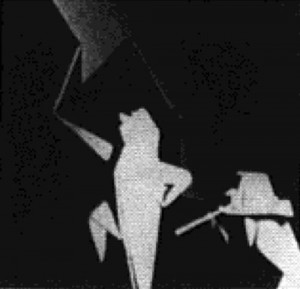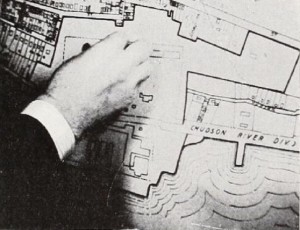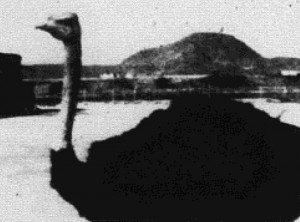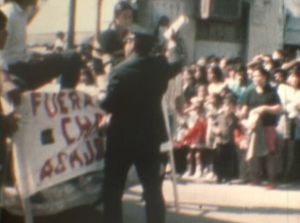"Orient–Old and New–Japan is an excellent travelog of this oriental island in the well known superb Ross style. Narrated by his wide, we are taken to many of the well known spots on the island, and shown some of the more unusual places of interest. The commentary is full of factual information which gives the film an exceptionally good pacing" PSA Journal, Sept. 1964, 50.

"Many forms of art originated in old Japan. Here is a demonstration of a unique and improbably one that began as entertainment for children. Origami, the art of paper folding, is charmingly portrayed and described in this very imaginative film. One of the Ten Best, it will be enjoyed in the 1963 Top of the Ten pack" PSA Journal, Oct. 1963, 40.

"Ossining in Wartime is a sincere cinematic record of civilian war activities which every community in the land would be pleased and proud to have. It was not an easy production to complete. Conceived only in the later years of our war effort, the majority of the picture's sequences had to be especially recreated for the ubiquitous camera of its producer, Robert F. Gowen. Newspaper headlines, posters, placards and an occasional subtitle maintain the film's episodic continuity from the earliest efforts of airplane spotters and air wardens to the final joyous ceremonies marking victory over Germany and Japan." Movie Makers, Dec. 1945, 496.

"The Ostrich Story by R. D. Charlton, a PSA member of Alexandra Headland, Queensland, Australia. Roy has many past winners to his credit and this film can only add to them with an unusual subject such as this. This 5-minute 8mm film was awarded an Honorable Mention" PSA Journal, Nov. 1971, 42.
"The Other Americans was a winner of a special Judges' Award for the Best Public Service Film in the "C" Classification. It's a long film, 52½ minutes in all, but it is filled with what poverty really is. Ms Julian Krainin and Dewitt Sage of Forest Hills, N. Y. have created a film about the Negroes, the Puerto Ricans, the Indians, the Coal Miners, the Farmers and many others that are poor, poor, poor. The average American will be surprised at how poverty-stricken other Americans are. The film is a mind-opener and well deserves the special award that it received," PSA Journal, Mar. 1970, 43.

"En este cortometraje se narra la resistencia al régimen en la ciudad de Monterrey, en el estado de Nuevo León, a través de varios frentes: la irrupción de un grupo de sindicalistas independientes en el desfile oficial del 20 de noviembre, con la presencia del gobernador Luis M. Farías; la invasión de tierras y la presencia de organizaciones vecinales en Topo Chico; los muertos por un accidente laboral en la Fundidora Monterrey; las huelgas de obreros de la CTM y de panaderos de la CROC (dos poderosos sindicatos oficiales), o la actividad vecinal del Grupo 2 de Octubre en la colonia Días Ordaz" (Vázquez Mantecón, 2012).
"This short film tells the story of the resistance against the regime in Monterrey city, in the state of Nuevo León, through several perspectives: the irruption of a group of independent union laborers in the official November 20th parade, with the presence of governor Luis M. Farías; the invasion of land and the presence of neighborhood organizations in Topo Chico; the dead by a working accident in Fundidora Monterrey [Monterrey Foundry]; the strikes of CTM workers and CROC bakers (two powerful official labor unions), or the activities of neighbors of the October 2 Group in Diaz Ordaz vicinity" (Vázquez Mantecón, 2012).
"In the late 1931 through early 1932, a heated debate developed among several amateur filmmakers in the Kansai region over the question of inserting portions of existing films in an amateur film production. The debate emerged when a 9.5mm amateur production, Otsukai, was disqualified from an amateur film competition sponsored by a Kansai-based newspaper company, Osaka Mainichi Shimbun (Daimai), after the film had once been selected as one of the winners of the contest. As a representative of Daimai, Kitao Ryōnosuke, who was not only a journalist but also a small-gauge filmmaker himself, explained that the film was excluded from the competition because the author, Takeuchi Kichinosuke, did not notify Daimai in advance about the insertion of a portion of an existing work. According to Kitao, even though the use of existing films would not be considered a form of plagiarism, Otsukai violated the competition guideline, which declared that a submitted film “must be one’s own creation.... Takeuchi, after providing the details of how and why he employed part of a film by one of his friends named Tanaka Yoshitsugu, raised a question concerning how to interpret the idea of “one’s own creation.” Drawing upon Soviet filmmaker Vsevolod Pudovkin’s montage theory, Takeuchi insisted that “one’s own creation” in filmmaking stemmed most fundamentally from montage editing, rather than from other formal or stylistic components including shooting with a camera.” - Noriko Morisue, "Filming the Everyday: History, Theory, and Aesthetics of Amateur Cinema in Interwar and Wartime Japan" (Yale University: PhD Dissertation, 2020): 65-66.
"Coastal people, places and scenery between Vancouver Island and the mainland. Includes footage of Indian villages, pictographs, birds and wildlife, logging operations, other vessels, etc." British Columbia Archives.
Total Pages: 299